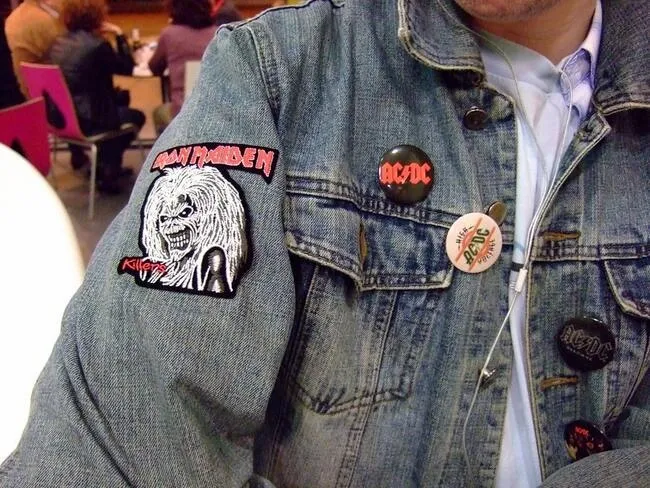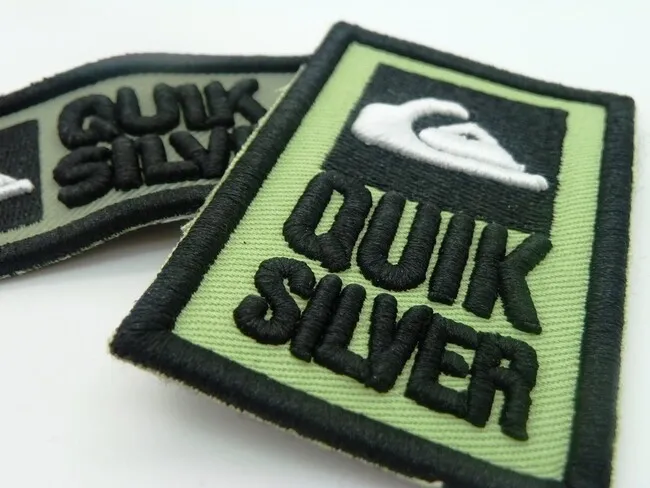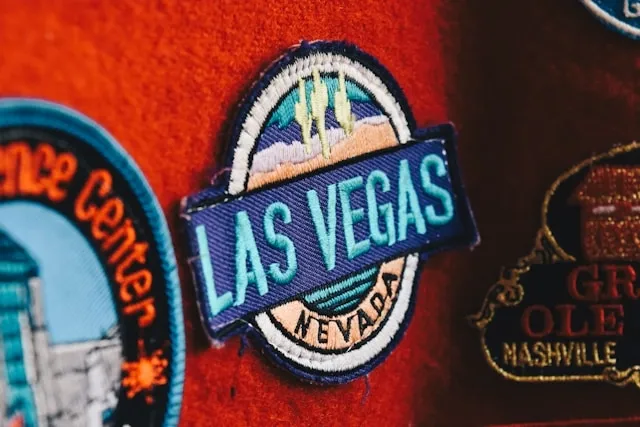Best Custom Patches: Top US Companies, Best Fabrics & Vendors
Looking for the best custom patches to express your style, showcase your brand, or commemorate something meaningful? In this post, we explore the top suppliers of custom patches in the USA. Discover the best materials, standout vendors, and expert tips to obtain durable, vibrant, tailored patches for any need.

Key Takeaways
- The best custom patches can come in many types, including embroidered, woven, PVC, chenille, and leather.
- To choose the right patch for you, consider design complexity and your intended usage to identify the optimal patch type.
- The best patch vendors allow you to order direct from the factory for efficiency and cost-effectiveness, or you could make your own custom patches.
- Look for options to order in bulk to get larger quantities with a fast turnaround and access generous wholesale discounts.
- We supply a wide range of customized patches with many types and backings to choose from. Our prices are competitive and we accommodate bulk orders.
Table of contents
-
Best Custom Patches
-
Best Patch Company To Order From
-
How To Make Your Own Custom Patches?
-
Best Custom Patch Fabrics
-
How Much Does It Cost To Get A Custom Patch Made?
-
What Machine Do You Need To Make Patches?
-
What Is The Best Backing For Embroidered Patches?
-
How Long Do Printed Patches Last?
-
Are Custom Patches Cheaper Than Embroidery?
-
What Are The Best Custom Patches Colors?
Best Custom Patches
Custom patches are an extremely versatile accessory, available in a variety of types to meet different needs and preferences. Among the options, there are:
- Embroidered patches: A classic look with textured, raised stitching ideal for uniforms and clubs.
- Woven patches: Suitable for intricate detail with a smooth finish, these are a versatile choice.
- PVC patches: Durable and waterproof, these are suitable for outdoor gear and accessories.
- Chenille patches: Known for their iconic, fluffy texture, these are commonly used on sports apparel.
- Leather patches: Offering a rugged, sophisticated look, these are frequently seen on high-end clothing and accessories.
When considering the best custom patches, consider things like design complexity, your intended use, and the environment you will use them in. For instance, woven patches are ideal for detailed artwork, while PVC patches are great for outdoor applications.

Best Patch Company To Order From
When seeking the best custom patch company in the USA, look no further than us. Order from us to experience the best custom patch maker and enjoy benefits like cost-effectiveness and flexibility in quantities that you can only get by ordering directly from a factory. With no middlemen, we offer competitive pricing and can offer custom wholesale patches with generous bulk discounts and no compromise in quality or customization options.
We can supply many patch types, including:
- Embroidered
- Woven
- PVC
- Leather
With our direct-from-factory approach, you are guaranteed superior craftsmanship and timely delivery. Work with us to experience the convenience of working directly with a trusted manufacturer.
Create the best custom embroidered patches
Our custom embroidered patches are crafted using cutting-edge techniques and allow for diverse customization to create durable, vibrant patches with bulk discounts available if you need them.
How To Make Your Own Custom Patches?
Learning how to make custom embroidered patches can be a rewarding craft project. You will need some fabric and embroidery thread, a needle, an embroidery hoop, transfer paper, scissors, and fabric glue.
Here’s how it’s done:
- Create a design: Sketch your design on paper or use software.
- Choose the fabric and thread: Select a robust fabric and embroidery thread in the desired colors.
- Transfer the design: Use transfer paper to trace your design onto the fabric.
- Prepare your hoop: Place the fabric in an embroidery hoop so it stays taut.
- Start embroidering: With a needle and embroidery thread, stitch your design carefully.
- Cut and seal edges: When ready, cut out the patch. Be sure to leave a small border and seal the edges with fabric glue to prevent fraying.
If you want to avoid doing all this work yourself, you can order custom embroidered patches from our service.
How To Finish The Edges Of An Embroidered Patch?
Edge finishing is essential for making the best custom patches you can. It ensures durability and maximum aesthetic appeal, and there are several high-quality approaches:
- Merrowed borders: This involves stitching a thick, overlocked edge around the patch perimeter. This provides a clean, raised edge that looks great on round or oval patches. It also prevents fraying to enhance durability.
- Heat-cut edges: In this technique, you use a hot knife to cut the patch precisely. It’s ideal for more intricate shapes and designs, sealing the fabric with a smooth, flat edge to prevent fraying.
- Laser-cut edges: This technique is similar to heat-cut edges, but it uses a laser to achieve precise cuts and seal the edges. It delivers a crisp finish on detailed and complex shapes.
With proper edge finishing, you will extend the lifespan of your patch and add a professional touch.
Best Custom Patch Fabrics
When you explore fabrics for custom embroidered patches, there are several choices that stand out due to their unique properties.
- Twill: This is a popular choice for embroidered patches as it has a smooth surface and excellent durability. The diagonal weave pattern offers a stable background, so it is perfect for detailed embroidery.
- Felt: The classic, plush texture of felt is perfect for a vintage look. You can easily cut it into various shapes and it doesn’t fray, so it allows for both simple shapes and intricate designs.
- Denim: Strong and durable, denim provides a rugged aesthetic that works well for casual and outdoor-themed patches. And its thick weave can support heavy stitching.
With these fabrics, you get outstanding longevity and a high-quality appearance with your custom patches.

What Materials Can You Not Iron-On Patches?
There are some materials that are simply not suitable for custom iron-on patches as they are heat-sensitive. These include:
- Nylon: This can melt under the heat of an iron, so applying iron-on patches simply won’t work.
- Polyester: A material that is prone to scorching and melting at high temperatures, so it’s a risk for iron-on applications.
- Silk: This delicate material can easily be damaged by direct heat.
- Vinyl: Sensitive to heat, vinyl can warp or melt if it comes in contact with a hot iron.
Fortunately, some of the best custom patches are suitable for heat-sensitive materials. They use different attachment methods, such as:
- Sewing: A needle and thread can create a durable attachment for any fabric.
- Fabric glue: Specially-formulated adhesives designed for fabrics can provide a strong bond with no need for heat.
- Velcro: This allows for a removable and reusable patch attachment method.
Our service allows you to create custom patches with all these attachment methods and more.
Need to create chenille patches with a reliable vendor?
Our custom large chenille patches are perfect for letterman jackets and other applications, offering that vibrant, textured appearance with superb durability and robust attachments.
Create your patches hereHow Much Does It Cost To Get A Custom Patch Made?
There are various factors that can impact the cost of having a custom patch made. They include:
- Size: Larger patches require more material, thus increasing the cost.
- Design complexity: Intricate designs with lots of details and colors are more expensive.
- Patch type: There are different costs associated with different patch types, like embroidered, woven, or PVC.
If you need to know roughly how much custom patches cost, embroidered patches usually come in the range of $1 to $5 per patch. Woven patches range from $1.50 to $6, PVC patches are typically $2 to $7 each, and chenille and leather are likely to cost between $3 and $10 per patch.
Remember that you can save money with our service when you place a bulk order to access wholesale discounts.
What Machine Do You Need To Make Patches?
To make the best custom patches with embroidered designs, you need an embroidery machine. There are home models and commercial-grade machines available.
- Home embroidery machines: Models like the Brother SE600 are ideal for beginners producing on a small scale. They offer computerized embroidery and various built-in designs and patterns with user-friendly operation and affordable price tags. But they have many limitations.
- Commercial embroidery machines: Built for large-scale production, the Melco EMT16X and similar machines provide faster stitching, larger embroidery fields, and multiple needles. They are more expensive but they are superior machines.
- Cricut machines: You can use these for cutting fabric shapes and heat transfer vinyl designs that you can then embroider to make your patches.
Choosing the right machine really depends on your production needs and available budget.
Enjoy reliable iron-on patches with unique custom designs
You create the design and we transform it into a durable, vibrant iron-on patch, with the option for discounted bulk orders and a range of size and material options.
What Is The Best Backing For Embroidered Patches?
The best backing for custom embroidered patches typically depends on the patch fabric and how you intend to use it. Here are the popular choices:
- Iron-on backing: This creates and easy attachment method to fabrics like cotton or denim. The adhesive on the rear is activated by heat to create a firm bond. You can tell if a patch is iron-on by looking for a smooth, shiny texture on the back.
- Velcro backing: This offers versatility, as you can easily attach and remove the patches multiple times. They are popular in the military.
- Plastic backing: This gives a patch stiffness and structure, suitable for larger or more intricate designs.
- Adhesive backing: These use a simple peel-and-stick adhesive for remporary applications.
Choose the right backing by considering your needs for durability, ease of application, and aesthetics.
How To Choose The Right Backing For Your Custom Patches?
Choosing the right backing for your custom patches is crucial for ensuring a durable patch that is easy to apply. Let’s break down the popular options:
- Iron-on: This is ideal for quick and easy application on fabrics like cotton or denim.
- Sew-on: With a little stitching skill, this provides a traditional option that is durable and elegant.
- Velcro: This offers versatility, allowing patches to be easily attached and removed multiple times.
- Peel-and-stick: This enables quick application but is only suitable for temporary use.
Think carefully about your intended use to determine the best custom patch backing. Your preference might differ for fashion, uniforms, or promotional items, so choose accordingly to ensure you get the best experience.
How Long Do Printed Patches Last?
The longevity of printed patches depends mainly on the materials used and maintenance. They are usually made from materials like polyester or cotton blends, and proper care will maximize their lifespan.
Compared to embroidered and woven patches, printed patches generally have a shorter lifespan due to the way they are printed. The stitching of embroidered patches and the weaving of woven ones offers superior durability to printed inks and dyes on the fabric.
Iron-on patches last a long time, but they may be less durable than sew-on ones. For printed patches with the longest lifespan, choose high-quality materials, follo care instructions closely, and choose a sew-on attachment for maximum durability.
Need high-quality Velcro patches for flexible applications?
You won’t find a better manufacturer of custom Velcro patches than us. With many materials and styles to choose from, enjoy cutting-edge craftsmanship and reliable attachments.
Create your patches hereAre Custom Patches Cheaper Than Embroidery?
Generally speaking, custom embroidered patches are a more cost-effective solution than direct embroidery. The cost of custom patches typically depends on factors like:
- Size
- Design complexity
- Patch type
- Quantity
We produce them in bulk, which reduces the cost per patch significantly.
With direct embroidery, designs are stitches straight onto the garments. This can be more expensive as it requires more skilled labor and the intricacy of stitching individual designs is considerable.
With regard to quality and aesthetics, embroidered patches usually have a raised, textured look owing to the stitched threads. This is durable and delivers a traditional finish. Custom patches can also be ordered in other varieties, like printed or woven, providing design versatility.
Ultimately, choosing between custom patches and direct embroidery depends on your budget and desired aesthetic.

What Are The Best Custom Patches Colors?
When choosing colors for custom patches, you need to consider both visibility and aesthetic appeal. Colors that contrast with the background fabric will enable the patch to stand out effectively. People usually choose bright and bold colors for a more eye-catching look that is noticed from a distance.
Current trends lean towards vibrant hues like neon or pastel shades for a more modern and fresh look. Classic color combinations like black and white or primarly colors also have an enduring popularity for their timeless appeal.
Consider the context and purpose of the patch as a guide for choosing colors. Corporate logos, for example, should be presented in specific brand colors, while decorative patches can explore more creative shades to match preferences and styles. Ultimately, the best colors for custom patches strike the right balance between aesthetic appeal, visibility, and alignment with the intended purpose.
Frequently Asked Questions About Best Custom Patches
What Are The Best Custom Patches?
The best custom patches really depend on your needs and preferences. But you should look for quality every time, and find the right balance between aesthetic appeal, durability, and cost.
What Are The Best Patch Companies?
We supply high-quality custom patches in a range of materials and styles, with an array of backing options and generous wholesale discounts that increase the more you order.